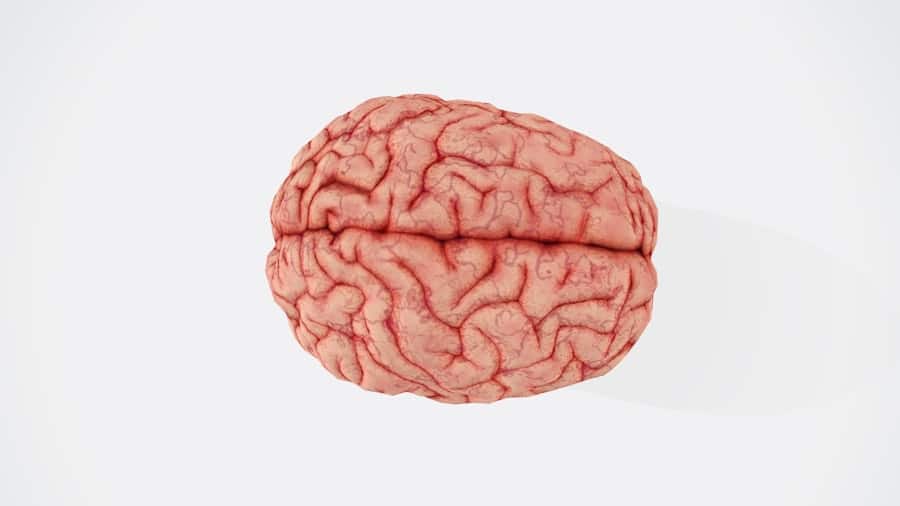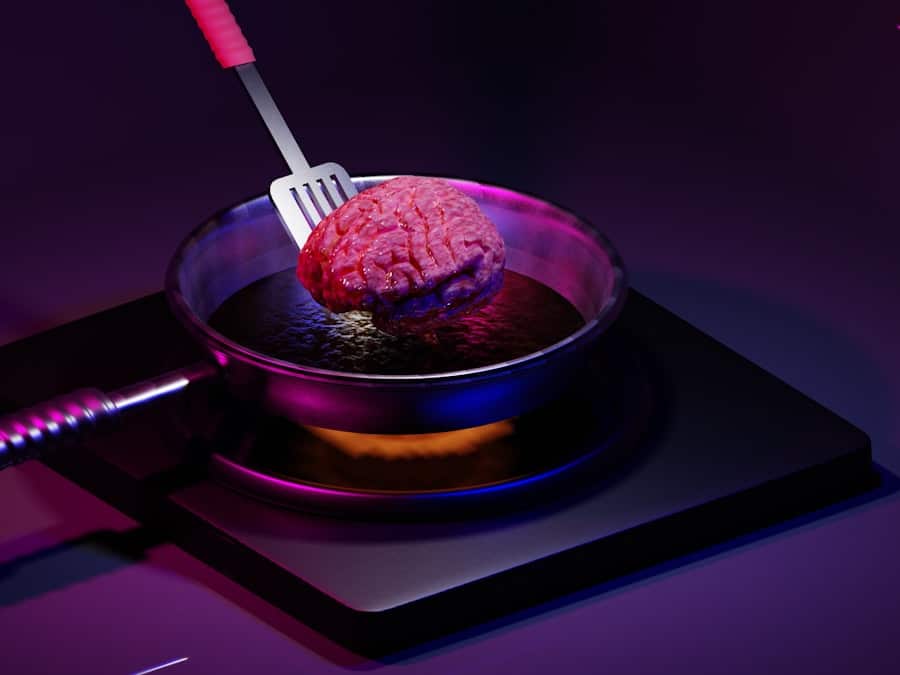Brain-Computer Interfaces (BCIs) represent a groundbreaking intersection of neuroscience and technology, enabling direct communication between the human brain and external devices. This innovative field has garnered significant attention due to its potential to revolutionize how individuals interact with machines, offering new avenues for communication, control, and even cognitive enhancement. BCIs operate by interpreting neural signals, which are then translated into commands that can control computers, prosthetics, or other devices.
This technology holds promise not only for enhancing human capabilities but also for addressing various neurological disorders and disabilities. The concept of BCIs is not merely a futuristic vision; it is rooted in decades of research and development. Early experiments in the 1960s and 1970s laid the groundwork for understanding how brain activity correlates with movement and thought processes.
As technology has advanced, so too have the methods for capturing and interpreting these neural signals. Today, BCIs can be classified into two main categories: invasive and non-invasive. Invasive BCIs involve surgical implantation of electrodes directly into the brain, providing high-resolution data but carrying significant risks.
Key Takeaways
- Brain-Computer Interfaces (BCIs) allow direct communication between the brain and external devices, opening up new possibilities for human-computer interaction.
- Human-Computer Interaction has evolved from traditional input devices to more intuitive and direct interfaces, with BCIs representing the latest frontier in this evolution.
- Advancements in brain interface technology have led to improved accuracy, speed, and reliability, making BCIs more practical for real-world applications.
- Brain interfaces have the potential to greatly improve accessibility and inclusivity for individuals with disabilities, providing new ways for them to interact with technology and the world around them.
- Ethical considerations and privacy concerns surrounding BCIs must be carefully addressed to ensure the responsible and secure use of this technology, especially in sensitive applications such as healthcare and personal data collection.
The Evolution of Human-Computer Interaction
The evolution of human-computer interaction (HCI) has been marked by significant milestones that reflect the changing nature of technology and user needs. Initially, interaction with computers was limited to command-line interfaces, where users had to memorize complex commands to perform tasks. This paradigm shifted dramatically with the introduction of graphical user interfaces (GUIs) in the 1980s, which allowed users to interact with computers through visual elements like icons and windows.
This shift made computing more accessible to the general public, paving the way for widespread adoption of personal computers. As technology continued to evolve, so did the methods of interaction. The advent of touchscreens in the early 2000s further transformed HCI by enabling direct manipulation of digital content through touch gestures.
This innovation was particularly influential in the rise of smartphones and tablets, which have become ubiquitous in modern society. However, despite these advancements, traditional HCI methods still rely heavily on physical input devices such as keyboards and mice. The introduction of BCIs represents a radical departure from these conventional paradigms, offering a new dimension of interaction that bypasses physical interfaces altogether.
Advancements in Brain Interface Technology

Recent years have witnessed remarkable advancements in brain interface technology, driven by innovations in neuroscience, engineering, and machine learning. One notable development is the improvement in signal acquisition techniques. Researchers have made strides in enhancing the sensitivity and specificity of electrodes used to capture neural signals.
For instance, flexible and biocompatible materials are being utilized to create electrodes that can conform to the brain’s surface, minimizing tissue damage while providing high-quality data. These advancements have led to more accurate interpretations of brain activity, enabling more effective control of external devices. Moreover, machine learning algorithms have played a crucial role in decoding neural signals.
By training models on vast datasets of brain activity, researchers can develop systems that accurately predict user intentions based on their neural patterns. For example, studies have demonstrated that individuals can control robotic arms or computer cursors simply by thinking about specific movements. This level of control is made possible through sophisticated algorithms that analyze real-time brain data and translate it into actionable commands.
As these technologies continue to mature, the potential for seamless integration between human cognition and machines becomes increasingly tangible.
The Impact of Brain Interfaces on Accessibility and Inclusivity
One of the most profound impacts of BCIs is their potential to enhance accessibility and inclusivity for individuals with disabilities. Traditional input methods can be challenging or impossible for those with severe motor impairments or neurological conditions. BCIs offer an alternative means of communication and control that can empower these individuals to interact with their environment more effectively.
For instance, individuals with locked-in syndrome—who are fully conscious but unable to move or speak—can use BCIs to communicate through thought alone, significantly improving their quality of life. In addition to providing new communication avenues, BCIs can also facilitate greater independence for individuals with disabilities. For example, researchers have developed systems that allow users to control smart home devices using their thoughts.
This capability enables individuals with mobility challenges to manage their living environments without relying on caregivers or assistive technologies that may not fully meet their needs. As BCIs continue to evolve, they hold the promise of creating a more inclusive society where individuals with diverse abilities can participate fully in daily life.
Ethical Considerations and Privacy Concerns
As with any emerging technology, the development and implementation of BCIs raise important ethical considerations and privacy concerns. One major issue revolves around consent and autonomy. Given that BCIs involve direct access to an individual’s neural activity, questions arise about who has the right to access this data and how it can be used.
For instance, if a BCI is used in a clinical setting to monitor brain activity for therapeutic purposes, patients must be fully informed about how their data will be utilized and stored. Additionally, there are concerns about the potential for misuse of BCI technology. The ability to decode thoughts or intentions could lead to invasive practices if not properly regulated.
For example, there is a risk that employers could use BCIs to monitor employee productivity or even assess cognitive states without consent. Such scenarios highlight the need for robust ethical frameworks that govern BCI research and application, ensuring that individual rights are protected while fostering innovation.
Potential Applications of Brain Interfaces in Various Industries

The potential applications of BCIs span a wide range of industries, each offering unique opportunities for innovation and improvement. In healthcare, BCIs could revolutionize rehabilitation for stroke patients by enabling them to regain motor function through targeted brain training exercises. By using BCIs to monitor brain activity during rehabilitation sessions, therapists can tailor interventions based on real-time feedback from patients’ neural responses.
In the gaming industry, BCIs could create immersive experiences that allow players to control characters or environments using their thoughts alone. This level of engagement could redefine gaming as we know it, offering players a more intuitive and personalized experience. Furthermore, in education, BCIs could facilitate adaptive learning environments where instructional content is tailored based on students’ cognitive states, enhancing engagement and retention.
Challenges and Limitations of Brain-Computer Interfaces
Despite the promising advancements in BCI technology, several challenges and limitations remain that must be addressed before widespread adoption can occur. One significant challenge is the variability in individual brain signals; each person’s neural patterns are unique, making it difficult to develop universal BCI systems that work effectively for everyone. This variability necessitates extensive calibration processes for each user, which can be time-consuming and may limit accessibility.
Another limitation lies in the current state of non-invasive BCI technologies. While they offer safety advantages over invasive systems, non-invasive methods often struggle with lower signal resolution and susceptibility to noise from external sources. This can hinder the accuracy and reliability of signal interpretation, making it challenging to achieve seamless control over devices.
Ongoing research is focused on overcoming these limitations through improved sensor technologies and advanced signal processing techniques.
The Future of Human-Computer Interaction with Brain Interfaces
Looking ahead, the future of human-computer interaction with brain interfaces appears promising yet complex. As research continues to advance our understanding of the brain and refine BCI technologies, we may witness a paradigm shift in how humans interact with machines. The integration of BCIs into everyday life could lead to more intuitive interfaces that respond directly to our thoughts and intentions, fundamentally altering our relationship with technology.
Moreover, as BCIs become more prevalent, societal implications will need careful consideration. The potential for enhanced cognitive capabilities raises questions about equity and access; ensuring that these technologies are available to all segments of society will be crucial in preventing disparities in cognitive enhancement opportunities. Additionally, as ethical frameworks evolve alongside technological advancements, ongoing dialogue among stakeholders—including researchers, ethicists, policymakers, and the public—will be essential in navigating the complexities associated with BCIs.
In conclusion, while the journey toward fully realized brain-computer interfaces is still unfolding, the implications for human-computer interaction are profound. The convergence of neuroscience and technology promises not only enhanced communication and control but also a redefinition of what it means to interact with machines in an increasingly digital world.
In the rapidly evolving landscape of technology, brain-computer interfaces (BCIs) are at the forefront of redefining human-computer interaction. These interfaces are transforming the way we interact with devices, offering unprecedented control and accessibility. A related article that delves into the broader context of technological advancements is The Best Apple Laptops 2023. This article explores the latest innovations in Apple’s laptop lineup, highlighting how cutting-edge technology is enhancing user experience and productivity. As BCIs continue to develop, they may soon integrate with such devices, further revolutionizing the way we engage with technology in our daily lives.
FAQs
What is human-computer interaction with brain interfaces?
Human-computer interaction with brain interfaces refers to the use of technology to enable direct communication between the human brain and a computer or other devices. This technology allows users to control and interact with technology using their thoughts and brain signals.
How does brain interface technology work?
Brain interface technology works by detecting and interpreting brain signals, such as electrical activity or blood flow, and translating them into commands that can be understood by a computer or device. This can be achieved through various methods, including electroencephalography (EEG), functional magnetic resonance imaging (fMRI), or invasive brain implants.
What are the potential applications of human-computer interaction with brain interfaces?
The potential applications of human-computer interaction with brain interfaces are vast and diverse. They include assistive technologies for individuals with disabilities, brain-controlled prosthetics, neurofeedback for mental health and wellness, immersive virtual reality experiences, and enhanced communication and control in various industries.
What are the benefits of using brain interfaces for human-computer interaction?
Using brain interfaces for human-computer interaction can offer several benefits, including increased accessibility for individuals with physical disabilities, more intuitive and natural interaction with technology, improved efficiency and precision in controlling devices, and potential advancements in healthcare and neuroscientific research.
What are the challenges and limitations of brain interface technology?
Challenges and limitations of brain interface technology include the complexity and variability of brain signals, the need for accurate and reliable signal detection and interpretation, potential privacy and ethical concerns related to brain data, and the current high cost and limited availability of advanced brain interface technologies.

